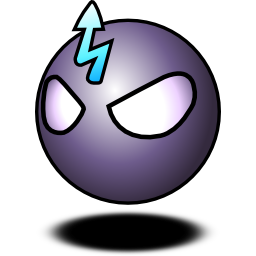I’m about to start a series of blog posts called Games Look Bad. Before I start throwing stones from my glass house over here, I wanted to offer an explanation of what I’m doing and a defense of why I’m doing it.
There’s no doubt that we’ve seen a sustained and significant period of improvement in real-time computer graphics over the past three decades. We’ve made significant advances in nearly every aspect of visual look and feel, drawing quite a bit from the film industry in the process. So why the heck do most games look so bad?
Games are technically much more sophisticated than ever before, but I’m going to stake out a claim: aesthetically something has gone quite wrong, and the products don’t live up to the hype. Show me a next-gen, cutting edge game and I will show you an image that no competent film industry professional would ever deem acceptable. Why not? The answer lives at the crossroads of art and technology, a strange neglected intermediary which we in the industry tend to avoid talking about. Particularly in the last ten years, several new techniques have appeared that are foundational to practically every high end game on the market. These are well documented from a technical standpoint, and it’s generally assumed that graphics programmers who have stayed current are fluent in at least the basic goals and implementations of these techniques, if not the finer points of them. I won’t labor to build a complete list, but you likely know them: normal maps, HDR/tonemaps, physically based shading, volumetrics, DoF/bokeh, etc.
What’s extremely difficult to find, though, is a discussion of how to make these techniques visually appealing. Oh sure, we’ll sort of handwave it from time to time, but graphics programmers as a set don’t like talking about visual appeal in the way that artists do. It’s much easier to build the tools and then let the artists make it pretty. Except the artists, even the tech artists, don’t always have the know-how or mathematical tools to solve that problem. Sometimes we end up borrowing our looks from someone else - how many of you have googled FilmLut.tga? How many of you are using Unreal’s tone map operator, tweaked or even verbatim?
This series is going to take a sharply critical tone towards most AAA games being shipped today, because it’s my belief that there are fundamental problems with many of the techniques we’re using today that reach beyond strictly technical constraints. Graphics programmers and engines are implementing many techniques for new effects without taking the time or energy to properly refine the visual and aesthetic aspects of those effects. Marketing tells us we should be impressed by all the new features, yet when you take a step back from the fact that these are games and evaluate the images without that context, they look horrible. This is a problem that is fixable today, with current technology.
I don’t know if my thesis here is particularly well developed, but it’s a good excuse for the meat of this series. I don’t want to talk about how to implement techniques. There are many people who have done an excellent job of that and you should have that background coming in. I’m going to talk about the visual choices we make in these techniques, how they make our games better, how they make our games worse, and whether we’re using them well. I’m going to encourage everyone to think critically about why and how we’re implementing the things that make modern games tick, and examine the tunnel vision that has afflicted that process maybe since the beginning. And in the process, I’m going to criticize people’s work which far exceeds my own in every respect, while largely failing to provide solutions to problems. I know that and I accept it. And that is where we shall start.
 Promit's Ventspace
Promit's Ventspace
Comments